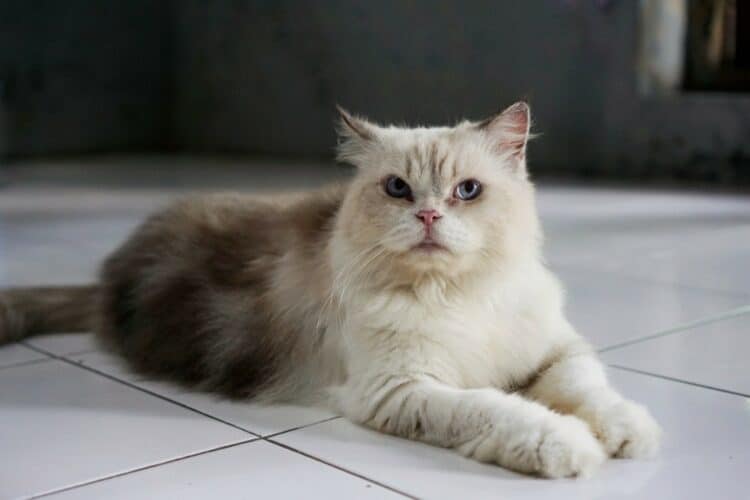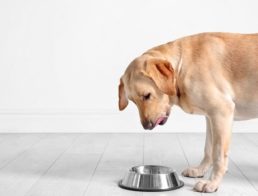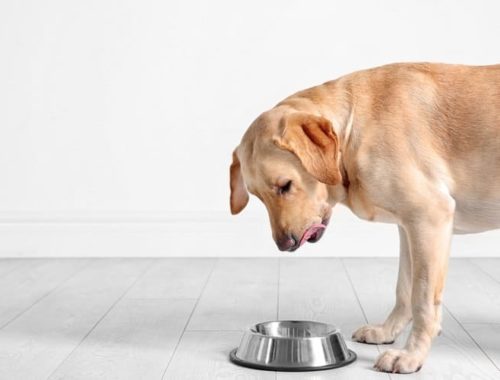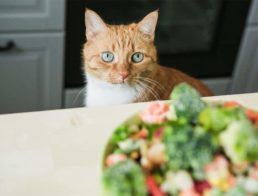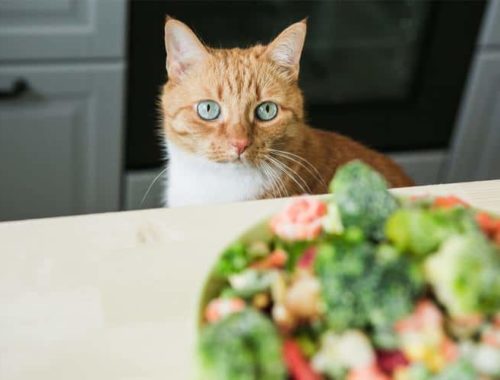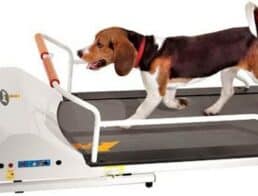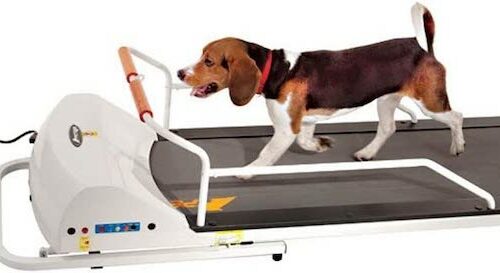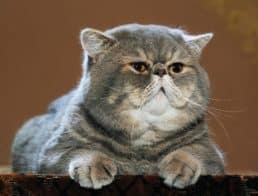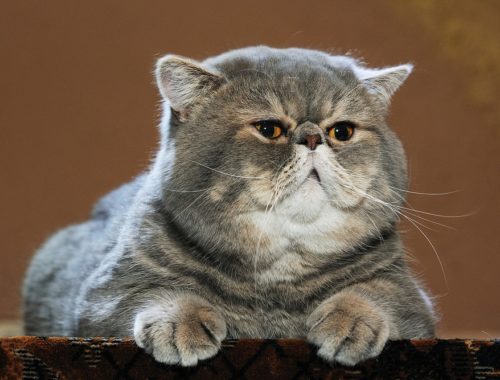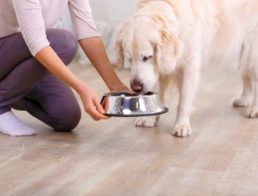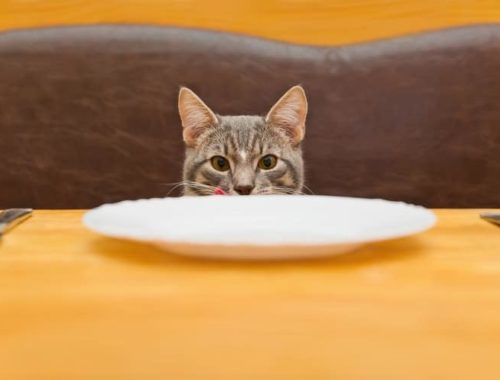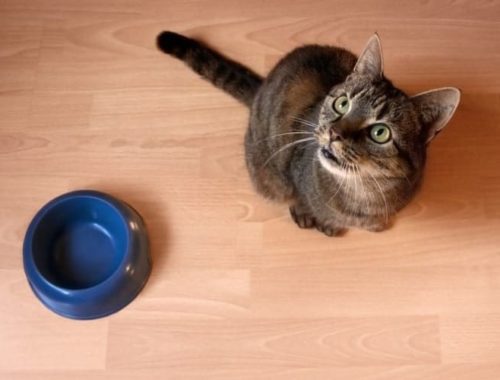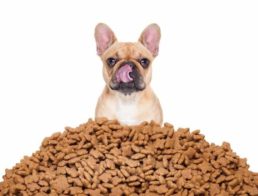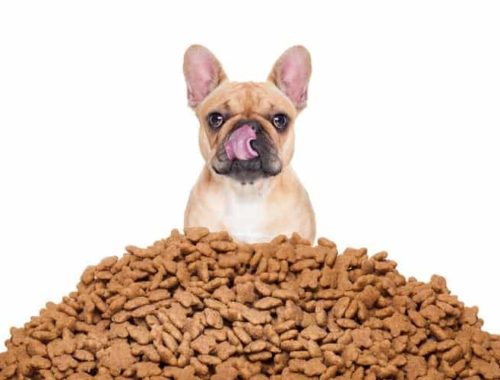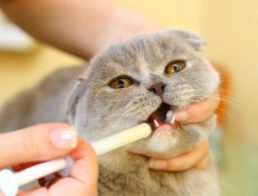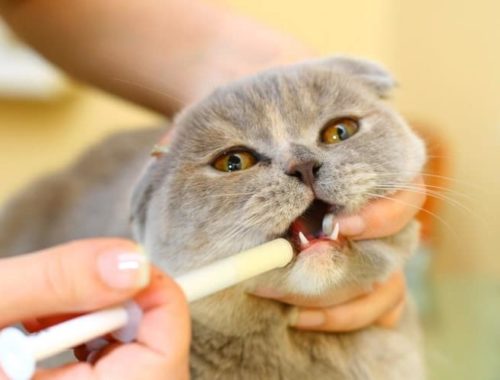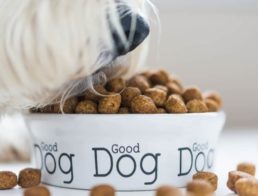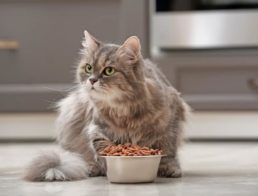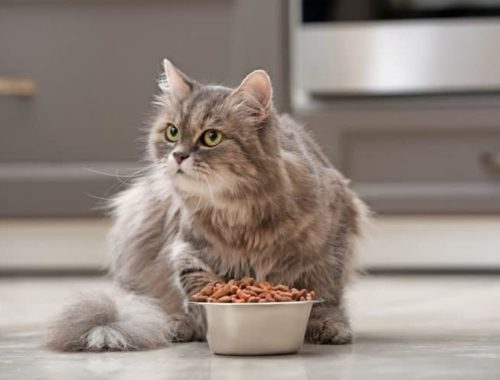Question: What is a good food for a cat with hyperthyroidism?
My 16-year-old cat was diagnosed with hyperthyroidism. He is currently on methimazole tablets. He has lost a lot of weight and is barely 8 lbs.
I am looking for a good dry and canned food for him. I also have 4 other cats and two of them are obese so they are fed separately on weight loss food.
I have read that the Hills Y/D is NOT a good food for him to be on. I also have read the following: Hyperthyroidism cats need diets, that contain little to no soy, fruits, vegetables, or grains.
Yikes! What do I do? He needs to gain weight, and he is always hungry. But I cannot feed him canned all day, so I need dry food while I am at work. Can you recommend foods, please?
–Jennifer
Answer:
Dear Jennifer,
Thanks for writing in with your question about your cat. Hyperthyroidism is common amongst senior cats. With so many food choices available, I understand your confusion when it comes to choosing the best food for him. I’ll walk you through the steps I use to evaluate cat foods for specific patients.
Before we talk about choosing food, it’s important to realize that the most important factor in normalizing your kitty’s weight is adequate treatment of his thyroid disease.
Finding the perfect amount of medication to control the disease requires repeat testing of thyroid hormone levels in his blood. Make sure you follow your veterinarian’s recommendations for timely re-check exams and testing.
What Is the Ideal Food for Hyperthyroid Cats?
Most cat nutrition experts recommend that cats eat a diet high in moisture and low in carbohydrates. Wet, or canned, cat food is the most recommended form of diet. Canned/wet cat food helps cats by getting more water into their systems.
Cats fed canned food have a higher total water intake than cats fed dry food, even when they have free access to water. Cats evolved in desert environments and have a low thirst drive. Their natural diet of birds and rodents provided most of the moisture they needed to survive.
Modern house cats eating dry kibble food are always a bit behind on water intake. For people who are away from home during the day, feeding multiple small meals of canned food isn’t practical. I recommend owners feed a high-calorie canned food in the morning and evening to meet most of the cat’s caloric needs and leave some dry food for daytime nibbling.
Hill’s y/d food may be helpful for some cats who are difficult to medicate. It has an extremely low iodine level to limit the production of thyroid hormone. However, if your cat has access to any other foods or treats, y/d food will not be effective. Since you have other cats who eat different food, y/d food is not the ideal choice.
Criteria for Hyperthyroid Cat Food
We’d like to find a food that is lower in carbohydrates and higher in calories than average dry cat foods. There is no clinical research data to prove that soy, fruit, grains or vegetables are detrimental to cats or hyperthyroid conditions. If you choose to avoid those ingredients for personal reasons, then we must consider that when reviewing the ingredients list.
The subject of ideal cat diets is controversial, to put it mildly. You’ll have to make your own decision about what is and isn’t appropriate for your cat. My personal preference is for foods that replicate the nutrient balance of a cat’s natural diet.
With that said, it will be difficult or impossible to find a dry cat food that doesn’t contain some sort of starch (i.e., vegetables) since the physical formation of kibble requires it. Therefore, I’m not including vegetables on the list of things to avoid.
Our criteria:
1. Dry kibble food.
2. High-calorie, high-palatability food.
2. Lower in carbohydrates than average.
3. Avoid soy, grains, and fruits.
Food to Promote Weight Gain in Cats
There are many choices available, but I’ll give you one example of a product that fits our criteria:
Nutro Wild Frontier Kitten Open Valley Recipe Chicken Flavor High-Protein Grain-Free Dry Cat Food.
How did I choose this food? Read on…
How to Evaluate Dry Cat Food
Read the label or visit the manufacturer’s website to find the calories in each cup of food. To calculate the carbohydrate level, plug the numbers from the Guaranteed Analysis label on the food package into this free online calculator: BalanceIT Guaranteed Analysis Converter.
- Calories
The product label states this dry food contains 475 calories per cup (average is around 350 calories per cup). - Carbohydrates
Using the BalanceIT calculator, I see it gets only about 20% of calories from carbohydrates (average is 30%+). - Ingredients
From the product’s ingredients list, I confirmed that the food has no soy, grain or fruit ingredients. It does contain peas as a starch source but still manages to be relatively low in carbohydrates for a dry cat food.
Keep Other Cats from Stealing Food
Since your cat needs to put on weight, you can leave some dry food for him to eat throughout the day while you’re gone.
To keep the other cats from eating his dry food, you’ll have to put on your thinking cap to outwit them. Some of my clients have built a feeding station out of boxes for the underweight cat. The contraption had a small door so the skinny cat could get in but the overweight cats couldn’t.
There are some cool products available that allow food access to only one cat. One such device is the SureFeed Microchip Pet Feeder. which allows only the pet wearing a special collar to access the food.
Conclusion
You should now be able to look at a cat food’s label and make informed decisions. There are many, many choices available. I feel certain you can find one that suits your needs as well as your cat’s!
Regards,
TB Thompson DVM
Disclaimer: Your use of the Ask The Vet feature is subject to the Ask The Vet Terms of Use.
Featured Image Credit: MULTI ILHAM ANUGRIYA, Shutterstock


